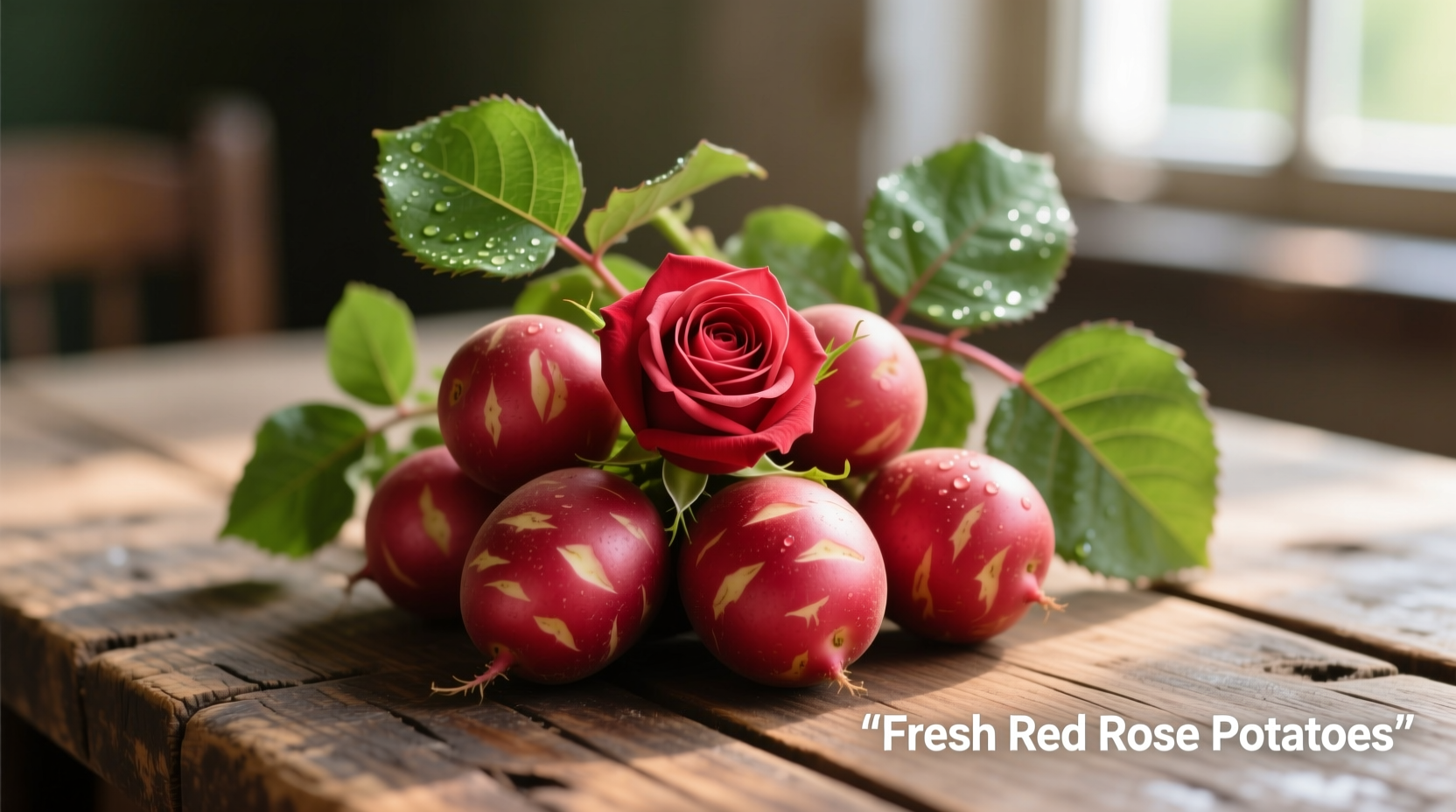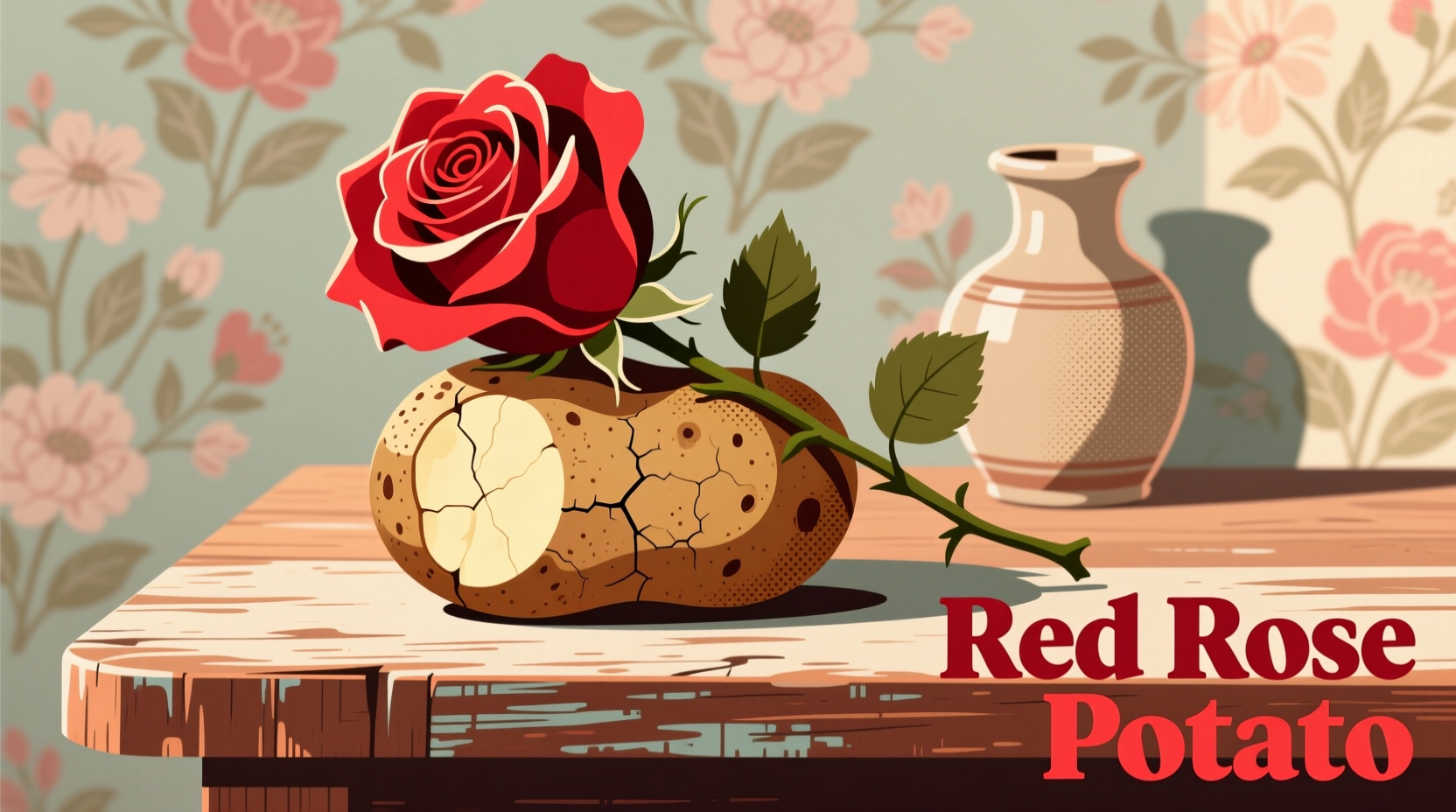Red Rose potatoes are a premium red-skinned variety known for their creamy texture, buttery flavor, and exceptional versatility in cooking. These medium-sized potatoes feature smooth, rosy-red skin with shallow eyes and pale yellow flesh that holds its shape beautifully when boiled, making them ideal for salads, roasting, and mashing. Unlike many red potato varieties, Red Roses offer a richer flavor profile with subtle sweetness and maintain excellent moisture content even after cooking. They're naturally high in vitamin C and potassium while providing complex carbohydrates for sustained energy.
When you pick up a Red Rose potato at the market, you're holding a culinary gem that delivers consistent performance across countless cooking applications. These potatoes have earned their reputation as a chef's favorite for good reason—they combine the waxy texture needed for potato salads with enough starch to create velvety mashed potatoes without becoming gluey. Unlike standard red potatoes that can sometimes be watery, Red Roses strike the perfect balance that home cooks and professional chefs appreciate.
Understanding Red Rose Potatoes: More Than Just a Pretty Face
Red Rose potatoes represent a carefully cultivated variety developed specifically for superior culinary performance. Originating from selective breeding programs in the Pacific Northwest, these potatoes were introduced to address common frustrations with traditional red varieties—particularly their tendency to become waterlogged or lose shape during cooking. The result is a potato that maintains structural integrity while delivering exceptional flavor.
What sets Red Roses apart isn't just their attractive appearance but their consistent performance across cooking methods. While many red potato varieties excel in only one or two applications, Red Roses reliably deliver excellent results whether you're boiling them for a salad, roasting them with herbs, or mashing them for a comforting side dish. This versatility makes them a valuable staple for any kitchen.
| Potato Variety | Best Cooking Methods | Texture When Cooked | Flavor Profile | Storage Life |
|---|---|---|---|---|
| Red Rose | Boiling, roasting, mashing, salads | Creamy yet firm | Buttery with subtle sweetness | 3-4 weeks |
| Russet | Baking, frying, mashing | Fluffy | Earthy, robust | 2-3 months |
| Yukon Gold | Mashing, roasting, soups | Creamy | Buttery, rich | 2-3 weeks |
| Fingerling | Roasting, grilling, salads | Firm | Nutty, earthy | 2-3 weeks |
The Evolution of Red Rose Potatoes
Understanding the development timeline of Red Rose potatoes reveals why they've become so popular among discerning cooks. Unlike heirloom varieties that have remained unchanged for generations, Red Roses represent modern agricultural advancement focused specifically on culinary performance.
The breeding program that produced Red Rose potatoes began in the late 1990s at Oregon State University's agricultural research facility. Researchers identified the need for a red-skinned potato that maintained better texture and flavor than existing varieties. Through careful cross-breeding of select red potato varieties known for their color and disease resistance with others prized for flavor and texture, they developed the Red Rose variety.
After extensive field testing between 2003-2008 to ensure consistent performance across different growing conditions, Red Rose potatoes were commercially released in 2010. According to the Oregon State University Agricultural Extension, these potatoes quickly gained popularity due to their reliable performance and superior taste characteristics compared to standard red potato varieties.

Selecting and Storing Red Rose Potatoes for Maximum Freshness
When shopping for Red Rose potatoes, look for firm specimens with smooth, unblemished skin and minimal eyes. The rosy-red color should be vibrant and consistent across the surface. Avoid potatoes with green spots, which indicate exposure to light and the presence of solanine, a naturally occurring compound that can cause digestive discomfort.
Unlike russet potatoes that prefer cool, dark storage for months, Red Rose potatoes have specific storage requirements to maintain their quality. The USDA Agricultural Research Service recommends storing them in a cool, dark place with moderate humidity (45-50°F or 7-10°C) for optimal shelf life. Never store potatoes in the refrigerator, as cold temperatures convert starches to sugars, altering both flavor and cooking properties.
For best results, keep Red Rose potatoes in a well-ventilated container like a mesh bag or basket, away from onions and other ethylene-producing produce that can accelerate sprouting. Properly stored, they'll maintain peak quality for 3-4 weeks—significantly longer than many other red potato varieties but shorter than russets.
Culinary Applications: Where Red Rose Potatoes Shine
Red Rose potatoes excel in applications where you want potatoes to maintain their shape while developing rich flavor. Their moderate starch content (between waxy and starchy varieties) makes them incredibly versatile across cooking methods:
- Potato salads: Their firm texture holds up beautifully when boiled, absorbing dressings without becoming mushy
- Rustic roasting: Cut into wedges and roasted with olive oil and herbs, they develop a crisp exterior while remaining creamy inside
- Mashed potatoes: Unlike many red varieties, Red Roses create surprisingly creamy mashed potatoes without becoming gluey
- Gratin dishes: Their ability to maintain structure makes them ideal for layered potato bakes
- Breakfast potatoes: They develop excellent caramelization when pan-fried for home fries
One important context boundary to understand: while Red Rose potatoes work well for mashing, they won't produce the ultra-light, fluffy texture of russets. Instead, they create a denser, more flavorful mash that's perfect for dishes where you want potato flavor to shine through. Similarly, they're not the best choice for French fries, where higher-starch potatoes yield better results.
Nutritional Benefits You'll Appreciate
Red Rose potatoes offer impressive nutritional benefits that often surprise people who consider potatoes nutritionally lacking. One medium Red Rose potato (about 5.3 ounces) provides:
- Approximately 110 calories
- 26 grams of complex carbohydrates for sustained energy
- 2 grams of dietary fiber (8% of daily value)
- Significant amounts of vitamin C (providing about 25% of daily needs)
- Good potassium content (comparable to a banana)
- Naturally fat-free and cholesterol-free
The skin contains valuable fiber and nutrients, so leaving it on when cooking maximizes nutritional benefits. According to research published by the University of Minnesota Extension, colored potato varieties like Red Roses contain anthocyanins—powerful antioxidants also found in blueberries and red cabbage—that provide additional health benefits.
Perfect Pairings for Red Rose Potatoes
Red Rose potatoes' subtle sweetness and buttery flavor make them incredibly versatile in flavor pairings. Their culinary flexibility means they complement both delicate and robust flavors:
- Herbs: Rosemary, thyme, chives, and dill enhance their natural flavor without overwhelming
- Fats: Extra virgin olive oil, browned butter, or duck fat bring out their richness
- Aromatics: Shallots, garlic, and leeks create sophisticated flavor foundations
- Cheeses: Goat cheese, feta, and aged cheddar add complementary tang
- Proteins: They pair beautifully with roasted chicken, grilled salmon, and seared pork
For a simple yet impressive preparation that showcases Red Rose potatoes' qualities, try boiling them until just tender, then tossing with good quality olive oil, fresh herbs, and a squeeze of lemon. The potatoes absorb the flavors while maintaining their appealing texture and vibrant color.
Common Questions About Red Rose Potatoes
As these potatoes grow in popularity, home cooks frequently ask about their best uses and characteristics. Understanding these details helps maximize your cooking success with this versatile variety.











 浙公网安备
33010002000092号
浙公网安备
33010002000092号 浙B2-20120091-4
浙B2-20120091-4